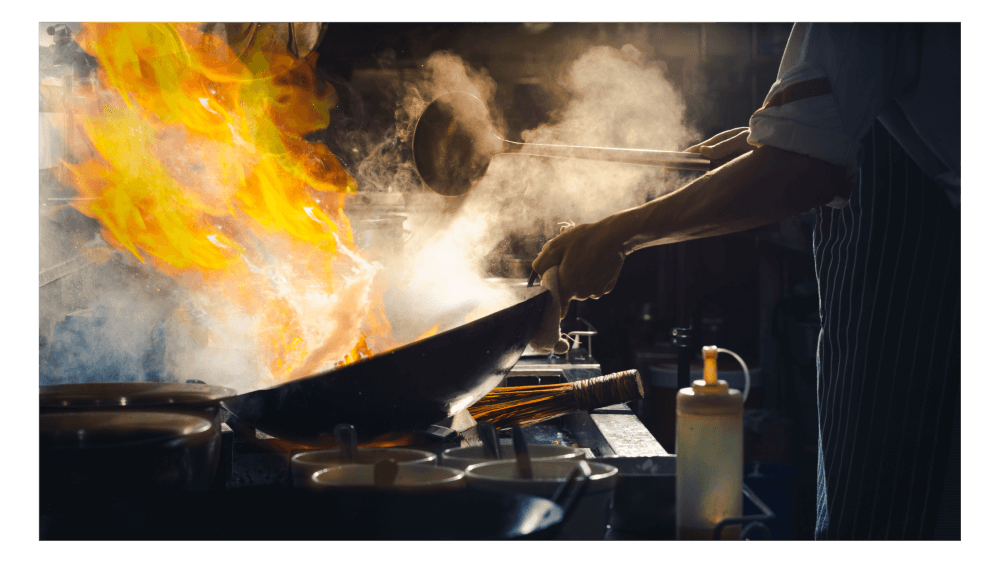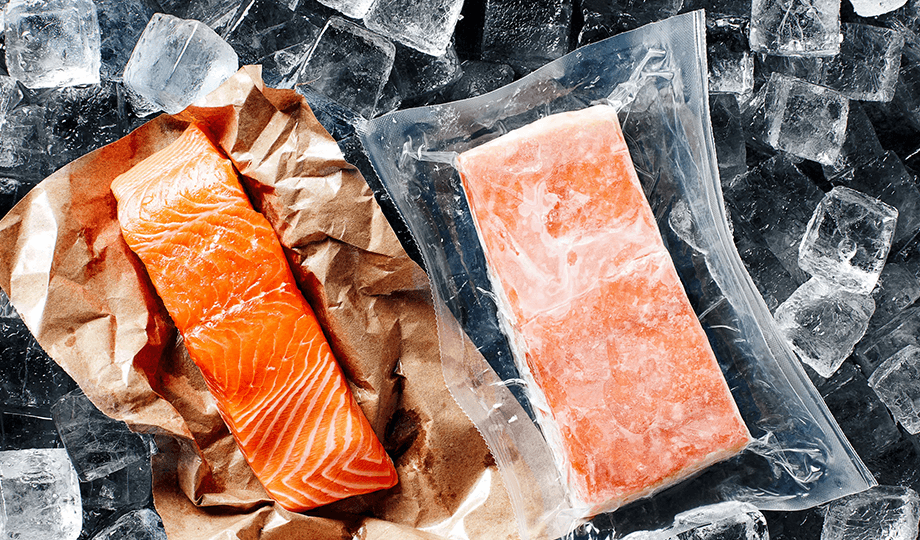Wok Hei Technique in Chinese Food

More than just a cooking method, Wok Hei is a characteristics of Cantonese cuisine, with its smoky aroma that envelops the dish that is usually served in Cantonese restaurants.
Wok hei can be described as the 'breath of the wok' resulting from a complex interaction of factors that is a blend of science, art and magic. However, Wok Hei is more than just stirring food in the wok; it's a blend of intense heat, technique, and precise timing to create complex flavors.
How to get the perfect wok hei aroma
1. Use a carbon steel wok
The ideal wok for wok hei is a carbon steel wok. This material can reach and maintain very high temperatures. Carbon steel woks also develop a non-stick patina over time, contributing to the flavor and aroma of the dish.
2. Seasoning the Wok
Make sure the wok you're going to use has been seasoned, this is to creates a thin layer of oil that prevents food from sticking and protects the metal surface from rust. This process involves heating the wok until the applied oil "burns" and blends with the surface. Unlike food seasoning, which aims to add flavor, wok seasoning is a maintenance technique that aims to improve the functionality and durability of the wok.
For pro friends who have just bought a wok, here is how to season it:
- Wash the new wok using soap and a bamboo brush to remove the factory protective coating.
- Dry the wok on the stovetop over low heat until all moisture has evaporated.
- Seasoning:
1. Heat the wok over high heat until it begins to smoke. This indicates that the wok is hot enough to start cooking. This will enhance the flavor of the wok hei over time.
2. Once the wok is smoking, pour in oil with a high smoke point, such as coconut or peanut oil, and spread it evenly over the entire surface of the wok.
3. Cook the wok with oil repeatedly to form a non-stick coating called patina.
3. Constant stir-frying technique
Keep the dish moving. Stir-fry the ingredients constantly with quick movements. This ensures all the ingredients come into contact with the very hot surface of the pan and evaporates excess moisture, creating the perfect flavor and texture.
4. Add the sauce at the end
Add the sauce in the last few minutes of cooking. Sauces often contain sugars that burn easily and can prevent the ingredients from cooking properly if added too early.
Scientifically, wok hei is the result of several chemical and physical processes that occur when food is cooked in a very hot wok. This unique flavor and aroma are a combination of:
- The Maillard Reaction - This is the main chemical process behind wok hei. The Maillard reaction occurs when amino acids and sugars in food react at high temperatures, producing hundreds of new flavor compounds.
- Sugar Caramelization - When sugars in food (or sauces) are exposed to high heat, they undergo caramelization, a chemical process that produces sweet and complex flavors. In wok hei, this rapid caramelization creates a thin, slightly charred, richly flavored layer on the surface of the food.
- Oil Pyrolysis - When oil in a wok is heated to its smoke point, it undergoes pyrolysis, a thermal decomposition that produces characteristic aromatic compounds.
- Charred Particles from the Wok - A well-maintained carbon steel wok will have a patina formed from polymerized oil. When food is cooked, tiny particles of this carbonized patina adhere to the food, imparting a unique charred flavor.
- Rapid Water Evaporation - The very high heat ensures that moisture from the food evaporates quickly. This prevents the food from becoming soggy. The dry surface of the food facilitates the Maillard reaction and caramelization, resulting in a crispier texture and more complex flavor.
This is why the wok hei technique is commonly used in Chinese restaurants because commercial stoves in Chinese restaurants have much higher temperatures and are specifically designed to heat carbon steel woks to extreme temperatures.
And don't forget to take care of your wok after use: simply clean it with hot water and a bamboo brush or soft sponge. Avoid using soap or abrasives, which can damage the patina. Dry the wok on the stovetop over low heat, then apply a light coat of oil to protect it.
The key to perfect wok hei is consistency. We hope these tips are helpful.
Stay tuned to our website for more recipes, tips, and menu inspiration!

